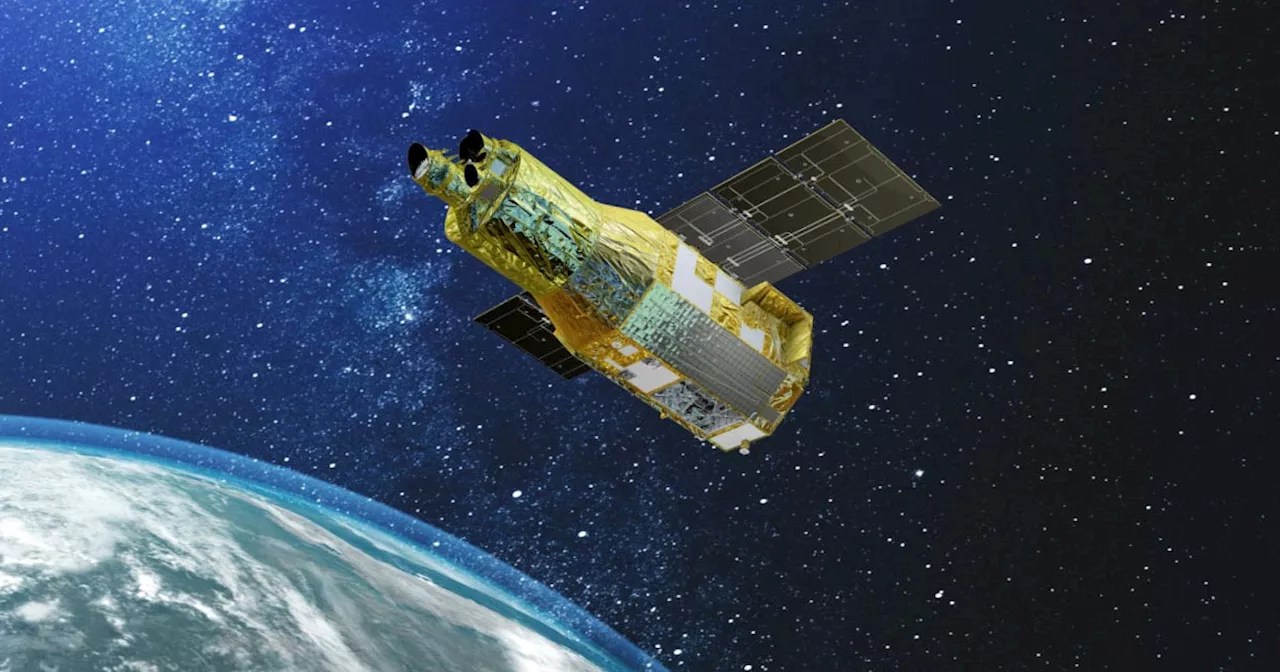Robert Lea is a science journalist in the U.K. whose articles have been published in Physics World, New Scientist, Astronomy Magazine, All About Space, Newsweek and ZME Science. He also writes about science communication for Elsevier and the European Journal of Physics. Rob holds a bachelor of science degree in physics and astronomy from the U.K.
Using the Hubble Space Telescope, astronomers have discovered the closest massive black hole to Earth ever seen, a cosmic titan"frozen in time." appears to have a mass of around 8,200 suns, which makes it considerably more massive than stellar-mass black holes with masses between 5 and 100 times that of the sun, and much less massive than aptly named supermassive black holes, which have mass millions to billions that of the sun.
An illustration showing the three types of astrophysical black holes, staring from the most massive on the left to the least massive on the rightYet, these intermediate-mass black holes with masses between a few hundred and a few thousand times that of the sun have, for the most part, seem to have avoided detection. That's because, like all black holes, these mid-sized cosmic titans are marked by outer boundaries calledbecomes so immense that not even light is fast enough to escape it.
The fact that our galaxy has matured enough to have grown a supermassive black hole at its heart means it has probably outgrown the stage of possessing many intermediate-mass black holes of its own. This one exists in the Milky Way, the team says, because theTiny black holes left over from the Big Bang may be prime dark matter suspects
United Kingdom Latest News, United Kingdom Headlines
Similar News:You can also read news stories similar to this one that we have collected from other news sources.
 Hubble Space Telescope finds surprises around a star that erupted 40 years agoAstronomers have used new data from NASA's Hubble Space Telescope and the retired SOFIA (Stratospheric Observatory for Infrared Astronomy) as well as archival data from other missions to revisit one of the strangest binary star systems in our galaxy—40 years after it burst onto the scene as a bright and long-lived nova.
Hubble Space Telescope finds surprises around a star that erupted 40 years agoAstronomers have used new data from NASA's Hubble Space Telescope and the retired SOFIA (Stratospheric Observatory for Infrared Astronomy) as well as archival data from other missions to revisit one of the strangest binary star systems in our galaxy—40 years after it burst onto the scene as a bright and long-lived nova.
Read more »
 Gyroscope Failures Force NASA to Change How It Points Hubble Space TelescopeScience, Space and Technology News 2024
Gyroscope Failures Force NASA to Change How It Points Hubble Space TelescopeScience, Space and Technology News 2024
Read more »
 NASA Rejects Hubble Space Telescope Rescue Mission and Trims Its ScienceFailing hardware on NASA’s Hubble Space Telescope may lead to less science, officials say, but the space agency isn’t ready to pursue a private repair mission
NASA Rejects Hubble Space Telescope Rescue Mission and Trims Its ScienceFailing hardware on NASA’s Hubble Space Telescope may lead to less science, officials say, but the space agency isn’t ready to pursue a private repair mission
Read more »
 The Hubble Telescope Has Shifted Into One-Gyro Mode After Months Of Technical IssuesThe Hubble Space Telescope is nearing its 35th birthday.
The Hubble Telescope Has Shifted Into One-Gyro Mode After Months Of Technical IssuesThe Hubble Space Telescope is nearing its 35th birthday.
Read more »
 Scientists 'Absolutely Gutted' as Door Jammed on Expensive Space Telescope, Blocking Its View of SpaceScience and Technology News and Videos
Scientists 'Absolutely Gutted' as Door Jammed on Expensive Space Telescope, Blocking Its View of SpaceScience and Technology News and Videos
Read more »
 NASA Webb, Hubble Scientist Marcia Rieke Awarded Gruber Cosmology PrizeMarcia Rieke, a scientist who worked on NASA’s James Webb Space Telescope and Hubble Space Telescope, has received the Gruber Foundation's 2024 Cosmology
NASA Webb, Hubble Scientist Marcia Rieke Awarded Gruber Cosmology PrizeMarcia Rieke, a scientist who worked on NASA’s James Webb Space Telescope and Hubble Space Telescope, has received the Gruber Foundation's 2024 Cosmology
Read more »
